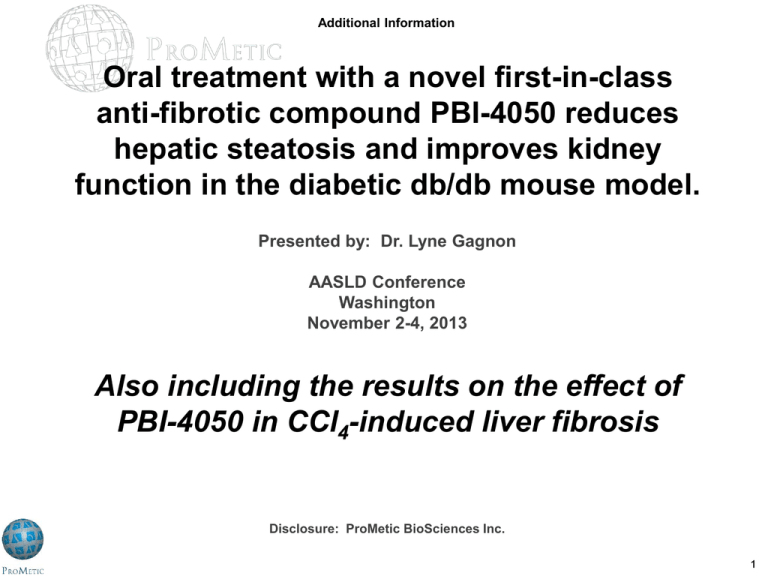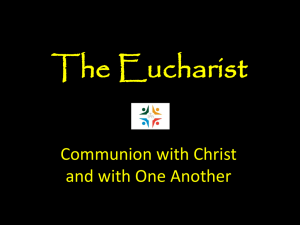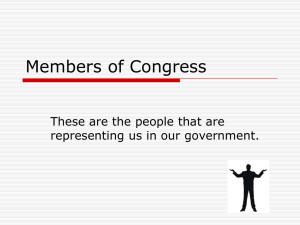Oral treatment with PBI-4050, a novel first-in-class anti
advertisement

Additional Information Oral treatment with a novel first-in-class anti-fibrotic compound PBI-4050 reduces hepatic steatosis and improves kidney function in the diabetic db/db mouse model. Presented by: Dr. Lyne Gagnon AASLD Conference Washington November 2-4, 2013 Also including the results on the effect of PBI-4050 in CCl4-induced liver fibrosis Disclosure: ProMetic BioSciences Inc. Program Number TO021 – 50th ERA-EDTA Congress – May 21, 2013 1 2 PBI-4050 preclinical data in two liver fibrosis models Chronic model Uni-nephrectomized diabetic (db/db) mouse model (Slides 4-16) NASH-fibrosis model CCl4-induced steatohepatitis (Slides 17-27) Program Number TO021 – 50th ERA-EDTA Congress – May 21, 2013 3 Chronic model: Uni-nephrectomized diabetic (db/db) mouse model 4 PBI-4050 reduces serum glucose to the C57BL/6 and sham level Serum glucose measured on 5-hour starved mice Program Number TO021 – 50th ERA-EDTA Congress – May 21, 2013 5 Treatment with PBI-4050 increases glucose metabolism in oral glucose tolerance test at day 112 Serum glucose measured on 16-hour starved mice Program Number TO021 – 50th ERA-EDTA Congress – May 21, 2013 6 PBI-4050 reduces liver steatosis Liver Steatosis 3.0 2.5 p = 0.04 2.0 1.5 1.0 0.5 0 Db/db Db/db + PBI-4050 Program Number TO021 – 50th ERA-EDTA Congress – May 21, 2013 7 PBI-4050 reduces liver steatosis C57BL/6 Db/db Db/db + PBI-4050 8 PBI-4050 reduces fibrotic markers expression in liver Program Number TO021 – 50th ERA-EDTA Congress – May 21, 2013 9 Treatment with PBI-4050 reduces kidney hyperfiltration in db/db mice at day 97 Program Number TO021 – 50th ERA-EDTA Congress – May 21, 2013 10 Treatment with PBI-4050 reduces proteinuria Program Number TO021 – 50th ERA-EDTA Congress – May 21, 2013 11 Treatment with PBI-4050 increases urinary creatinine excretion Program Number TO021 – 50th ERA-EDTA Congress – May 21, 2013 12 PBI-4050 reduces kidney mesangium lesions Program Number TO021 – 50th ERA-EDTA Congress – May 21, 2013 13 PBI-4050 reduces fibrotic markers expression in kidney Program Number TO021 – 50th ERA-EDTA Congress – May 21, 2013 14 PBI-4050 reduces lipid peroxidation in kidney 15 Conclusions: PBI-4050 offers the potential as a novel therapy for hepatic steatosis in DKD In liver Reduces steatosis Reduces fibrotic markers (TGF-, collagen 1, MMP-2 and TIMP-1 mRNA expression) In kidney Reduces kidney hyperfiltration, proteinuria, albuminuria Increases urinary creatinine excretion Reduces histological lesions in the mesangium Reduces fibrotic markers expression (IL-6, collagen 1, TIMP-1 and MMP-2 mRNA expression) Reduces oxidative stress (lipid peroxidation) PBI-4050 has now enter into clinical program. 16 NASH-Fibrosis Model CCl4-induced steatohepatitis Program Number TO021 – 50th ERA-EDTA Congress – May 21, 2013 17 CCl4-induced liver fibrosis: Effect of PBI-4050 Study design IP injection of 2ml/kg of CCl4 10% in olive oil, twice a week for 8, 12 or 16 weeks C57BL6/J male Day 1: Oral administration of vehicle or PBI-4050 (day 1 to day 59) Day 59: Euthanasia and analysis 18 Day 59: Evidence of pre-fibrosis The effect of PBI-4050 was studied on the pre-fibrosis/ fibrosis development in CCl4-induced hepatic fibrosis. Fibrosis was estimated with the measurement of hydroxyproline which is a direct measure of collagen (marker of fibrosis) in the liver (next slide). PBI-4050 reduces liver fibrosis. Program Number TO021 – 50th ERA-EDTA Congress – May 21, 2013 19 PBI-4050 significantly reduces hepatic concentration of hydroxyproline P = 0.007 Program Number TO021 – 50th ERA-EDTA Congress – May 21, 2013 20 PBI-4050 significantly reduces the histology activity index (HAI)-Knodell score Intoxication with CCl4 results in hepatocyte damage, necrosis, inflammation, and fibrosis, which spreads to link the vascular structures that feed into and drain the hepatic sinusoid (the portal tract and central vein radicle, respectively), and over 8-30 weeks results in the development of fibrosis to hepatocellular carcinoma. Knodell score is the combined scores for necrosis, inflammation and fibrosis. Histology activity index (HAI) evaluates: 1) Periportal +/- bridging necrosis (bridging between portal-portal and portal-central linkage); 2) Intralobular degeneration (acidophil bodies, ballooning, focal necrosisscattered foci of hepatocellular necrosis) and focal necrosis; 3) Portal inflammation, and 4) fibrosis (fibrous portal expansion, or bridging fibrosis (portal-portal or portal-central linkage or cirrhosis (loss of normal hepatic lobular architecture with fibrous septae separating and surrounding nodules)). Program Number TO021 – 50th ERA-EDTA Congress – May 21, 2013 21 PBI-4050 significantly reduces the histology activity index (HAI)-Knodell score p= 0.008 Program Number TO021 – 50th ERA-EDTA Congress – May 21, 2013 22 PBI-4050 significantly reduces the collagen score in liver (Masson’sTrichrome staining) p = 0.03 Program Number TO021 – 50th ERA-EDTA Congress – May 21, 2013 23 PBI-4050 significantly reduces collagene deposition in CCl4-induced liver fibrosis (Masson’s trichrome stain) The Masson’s trichrome stain the cytoplasm, keratin, muscle fibers and intracellular fibers in red colour; nuclei in black colour and collagen (fibrous tissue) in blue color. All control mice revealed a normal distribution of collagen. Extensive collagen deposition and bridging fibrosis were evident in CCl4-treated animals. Significant reduction of collagen deposition and bridging formation between portal-portal or portalcentral was observed in PBI-4050 treated animals. Program Number TO021 – 50th ERA-EDTA Congress – May 21, 2013 24 PBI-4050 significantly reduces histological lesions in CCl4-induced liver fibrosis (Masson’s Trichrome) Control CCL4) CCL4 + PBI-4050 (200 mg/kg) Control CCL4 CCL4 + PBI-4050 (200 mg/kg) 25 PBI-4050 significantly reduces histological lesions in CCl4-induced liver fibrosis (Hematoxylin-Eosin stain) The hematoxylin eosin stains the cytoplasm in red colour; nuclei with blue colour and show the steatosis and lymphocyte infiltration in stained tissue. A moderate steatosis and a severe inflammation are observed as compared to control (non-CCl4) mice. Treatment with PBI-4050 reduces inflammatory infiltration in hepatic lobes. Program Number TO021 – 50th ERA-EDTA Congress – May 21, 2013 26 PBI-4050 significantly reduces histological lesions in CCl4-induced liver fibrosis (Hematoxyline-Eosin) Control CCL4) CCL4 + PBI-4050 (200 mg/kg) Control CCL4 CCL4 + PBI-4050 (200 mg/kg) 27 Acknowledgements Biology Dr. Brigitte Grouix Lilianne Geerts François Sarra-Bournet Kathy Hince André Doucet Mikaël Tremblay Alexandra Felton Dr. Martin Leduc Liette Gervais Frank Cesari Lyne Marcil Pierre Laurin Chemistry Dr. Christopher Penney Dr. Boulos Zacharie Dr. Shaun Abbott Jean-Simon Duceppe 28









